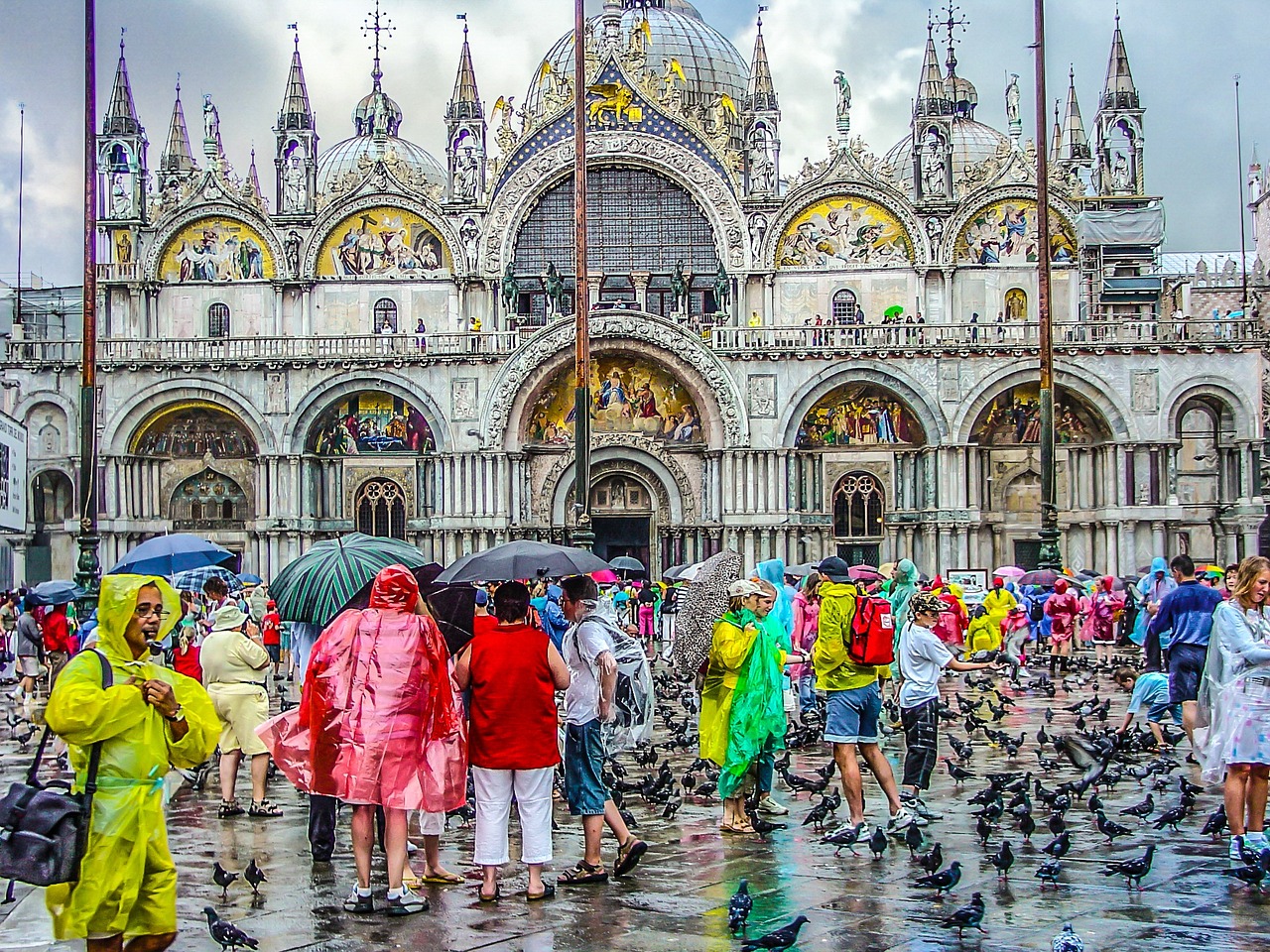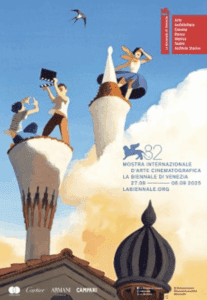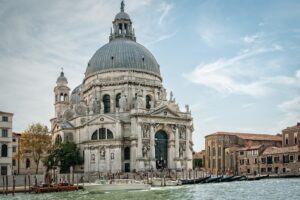What’s Venice Like with the High Tide (Acqua Alta)?
Every Venetian has a story about acqua alta — the “high water” that turns the world’s most romantic city into something resembling a floating dreamscape. For some visitors, it’s a surprise; for us locals, it’s just another chapter in our city’s long love affair with the sea.
When you first see St. Mark’s Square shimmer under a thin layer of water, it’s hard not to gasp. The reflection of the basilica in the flooded piazza feels surreal — part inconvenience, part poetry. Here’s what really happens when the tide comes in, and how to make the most of it like a true Venetian.
💧 What Exactly Is “Acqua Alta”?
Acqua alta literally means “high water” — a temporary rise in the water level of the Venetian Lagoon. It happens when astronomical tides (linked to the moon), strong winds from the south (especially the scirocco), and atmospheric pressure combine. Most of the time, the increase is small — a few centimeters. But during certain weather patterns, the water level can rise by more than a meter, flooding squares, shops, and the lowest streets of the city.
These tides have been part of Venetian life for centuries. The first recorded acqua alta dates back to 589 AD, long before Venice became a maritime powerhouse. Even then, the lagoon shaped everything — from architecture to daily rhythms.
🚶♀️ What It’s Like When Venice Floods
When the water rises, Venice transforms. Elevated walkways called “passerelle” are quickly assembled, allowing pedestrians to cross the flooded areas without getting their feet wet. Locals pull on knee-high rubber boots, shops protect entrances with metal barriers, and the whole city takes on a strangely serene, reflective energy.
The most affected areas are the lowest parts of the city: St. Mark’s Square, Rialto Market, and some sections of Dorsoduro and Santa Croce. Meanwhile, higher neighborhoods like Cannaregio and Castello stay relatively dry — a good reason to explore them with our off-the-beaten-path walking tour.
Don’t worry — the water usually subsides within a few hours. Venice breathes with the tides, and by afternoon, the streets are dry again, as if nothing happened.
📢 Sirens, Forecasts, and Venetian Resilience
When acqua alta is coming, the city doesn’t panic — it prepares. A four-tone siren system echoes across the rooftops to alert residents: one note means moderate flooding, four tones mean an exceptional tide (usually over 140 cm). Locals immediately check the Centro Maree app for precise levels — yes, Venice has its own tide forecast app.
Local tip: If you’re visiting between October and February, download the Hi!Tide app for real-time updates and maps of dry routes. You’ll feel like an insider navigating the labyrinth with confidence — and dry socks.
👢 How to Handle Acqua Alta Like a Local
- 💼 Pack smart: Bring waterproof boots or buy colorful rubber ones sold at local shops. They make great (and practical) souvenirs.
- 🕰️ Be patient: Tides rise and fall quickly — usually lasting only 3–4 hours. Plan indoor visits (like the Doge’s Palace) during peak water times.
- 🍷 Go slow: Venetians take high tide as an excuse for another coffee or glass of wine. Find a cozy bacaro and watch reflections ripple across the canals.
- 🚤 Explore by boat: Elevated water makes lagoon rides even more magical. Try a private boat tour — you’ll glide over canals that shimmer like liquid glass.
Pro tip: Avoid stepping directly into flooded areas without waterproof boots — the water is brackish lagoon water, not ideal for shoes or skin.
📆 When Does Acqua Alta Happen?
High tides are most common between October and February, especially in November. They’re caused by seasonal winds, heavy rainfall, and the gravitational pull of the moon. In recent years, extreme tides have become less frequent thanks to the activation of the MOSE system — a massive engineering project designed to protect Venice from sea surges.
🛡️ The MOSE Project: Venice’s Modern Guardian
MOSE (Modulo Sperimentale Elettromeccanico) is one of the world’s most ambitious engineering feats — a system of 78 mobile barriers that rise from the seabed to close off the lagoon from the Adriatic during exceptionally high tides. It’s not just a technological marvel; it’s Venice’s best hope for survival in the face of climate change and rising sea levels.
The project began in the early 2000s and was first successfully tested in 2020, when it protected the city from tides that would otherwise have flooded St. Mark’s Square. Today, MOSE is deployed several times each winter, reducing the number of severe floods dramatically. It’s still debated among locals (some fear environmental impacts), but one thing’s certain — it’s giving Venice precious time.
Fun fact: When MOSE rises, Venetians can walk dry-footed through Piazza San Marco during storms — something unthinkable a decade ago.
🏛️ How Floods Shaped Venetian Architecture
The constant dance between land and water shaped every brick of Venice. Buildings stand on wooden piles driven deep into the lagoon mud, a construction technique dating back to the 5th century. Ground floors often remain empty or used for storage, with living spaces raised above to stay dry during floods.
The marble façades you admire? They’re not just decorative — they’re designed to withstand saltwater erosion. Even the narrow calli (alleys) are slightly elevated in some neighborhoods to keep homes safe.
To truly understand this delicate balance between architecture and water, join our Lagoon Discovery Tour — where we visit hidden islands and show how Venetians have adapted to centuries of rising tides.
🎨 The Poetry of High Tide
While acqua alta can be inconvenient, it also brings out a surreal beauty few cities can match. The sound of lapping water fills the alleys; lights from palaces shimmer in mirrored streets; gondolas float higher than usual, brushing bridges as they pass. It’s Venice at its most cinematic — melancholic, reflective, otherworldly.
Many photographers and artists come in winter just to capture this mood. It’s no coincidence that some of Venice’s greatest paintings — by Canaletto, Turner, and Guardì — were inspired by its changing light and reflective waters.
And if you want to capture it yourself, try our Romantic Photoshoot in Venice — the reflections during acqua alta make for breathtaking memories.
🧭 Practical Tips for Travelers
- 📅 Check tide forecasts: Visit www.comune.venezia.it/maree or download the Hi!Tide app for daily predictions.
- 👟 Footwear: Waterproof boots are sold everywhere — or pick up chic ones at Rialto Market (locals wear them like fashion statements).
- 📸 Photography: Early morning light after the tide recedes offers the most stunning reflections of St. Mark’s Basilica.
- 🕰️ Timing: Tides usually peak at dawn and late afternoon — plan your walking routes around those times.
- 🍷 Enjoy it: Grab a seat in a high-floor café, order a Bellini, and watch the city float. Venice has been doing this for 1,500 years — and she’s not stopping anytime soon.
✨ In the End: Acqua Alta Is Part of Venice’s Soul
Yes, high tides can be inconvenient. Streets flood, boots squeak, and travel plans shift. But they’re also part of what makes Venice so extraordinary — a city that lives with the sea, not against it.
When you visit during acqua alta, you’re not just seeing Venice; you’re witnessing its eternal resilience — the delicate balance between water and stone that has defined this city for centuries.
🌊 Explore Venice’s Lagoon and Learn Its Secrets
🛶 Book Your Authentic Venice Tour with Tour Leader Venice
FAQs
When does acqua alta usually happen in Venice?
Acqua alta, or “high tide,” most often occurs between October and February, especially in November when weather patterns, winds, and tides align. Thanks to the MOSE barrier system, the city now experiences far fewer floods, but light tidal surges still happen a few times each winter — usually lasting only a few hours.
Is it safe to visit Venice during acqua alta?
Absolutely. The city is well-prepared, with raised walkways, tide alerts, and waterproof boots sold everywhere. Locals go about daily life as usual. The key is to check tide forecasts on the Hi!Tide app or the Centro Maree website, plan indoor visits during peak tide, and enjoy the surreal reflections that make this season so enchanting.
What should I do if Venice floods while I’m there?
Don’t worry — acqua alta is temporary. Stay dry by wearing waterproof boots, follow passerelle (raised walkways), and use local routes provided in real time on the Hi!Tide app. It’s also the perfect excuse to cozy up in a bacaro with a glass of wine or explore less-affected areas like Cannaregio and Castello, where you’ll experience the true everyday Venice.







